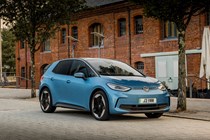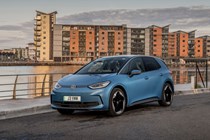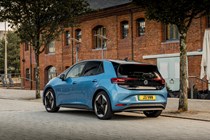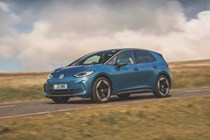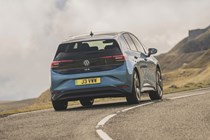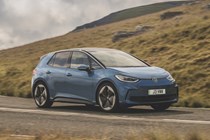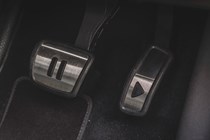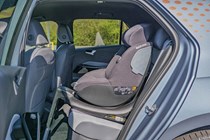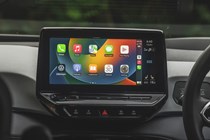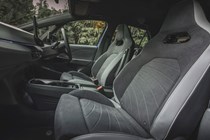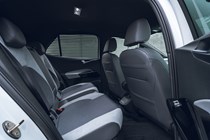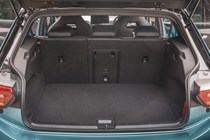
Volkswagen ID.3 running costs and reliability
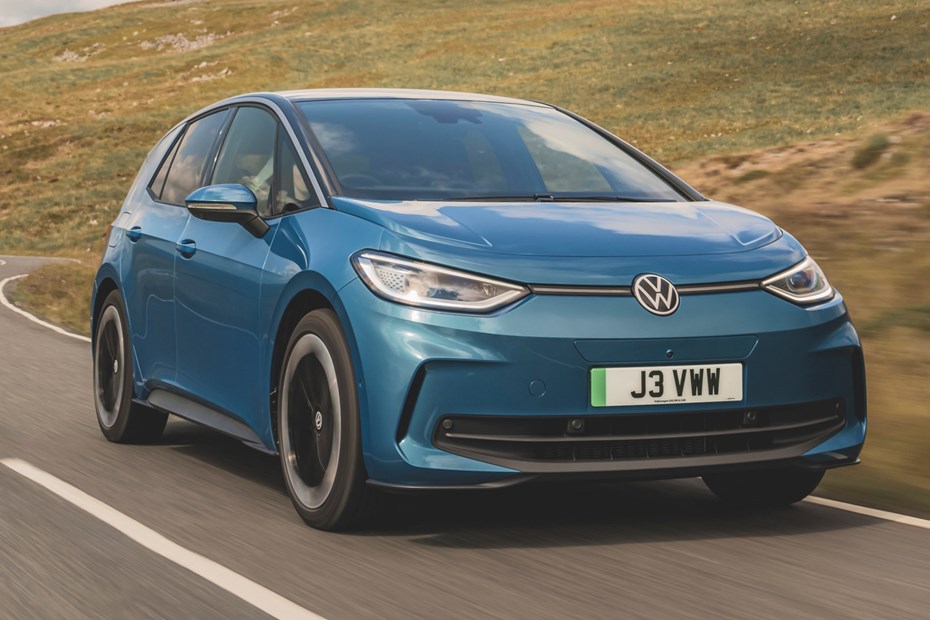
Miles per pound (mpp)
| Electric motors, home charging | 12.1 - 13.2 mpp |
|---|---|
| Electric motors, public charging | 6.5 - 7.1 mpp |
Fuel economy
| Electric motors | 4.1 - 4.5 miles/kWh |
|---|
- Should be cheaper than petrol or diesel…
- … if you can charge it at home an EV tariff
- 59kWh battery should be ample for most
What are the running costs?
That depends on how you charge it. If you can charge the Volkswagen ID.3 at home from a wallbox charger linked to an EV-friendly electricity tariff, it should be cheaper than running a petrol or diesel Golf on a mile-per-mile basis.
However, if you plan to rely solely on public EV charging, your fuel costs will probably end up breaking even – but you’ll be paying more money up front for the ID.3 over the Golf, leaving you out of pocket in the long run. The ID.3 makes great sense as a company car, though, because it attracts an exceedingly low rating for Benefit in Kind (BIK) tax.
Range and charging
UK Volkswagen ID.3 buyers can choose from four battery sizes: 52kWh, 59kWh, 77kWh and 79kWh. In WLTP tests, these achieved claimed range figures of 241, 269, 346 and 369 miles respectively. Just bear in mind that you won’t get those sorts of figures from the cars all the time – they’re a little optimistic and they vary with the temperature.
We conducted an extensive range test of the 77kWh ID.3 and found it to be most impressive. On a decidedly EV-unfriendly route in cold weather with lots of motorways and fast-flowing A-roads, we average 4.0-miles per kWh. We also drove our ID.3 until its trip computer showed there were zero miles of range left in the battery – and we covered 293 miles.
Granted, that’s quite a long way off the car’s official range figure but, to be fair to Volkswagen, our test was conducted under tougher conditions than you find in any WLTP lab. Usefully, the battery also has some reserve energy should you get caught short, but we weren’t brave/stupid enough to find out how much.

As for charging, if you have a wallbox installed at home, you should be able to completely recharge the ID.3 overnight. Try the same trick with a three-pin plug, though, and you won’t get anywhere near. However, nobody uses an EV like that. Part-charges from 60 to 80% capacity are far more common – and they take a few hours from a wallbox.
Connect the car to a DC rapid charger capable of delivering 170kW and Volkswagen says you’ll be able to charge the 77kWh ID.3 from 5% to 80% capacity in just 30 minutes. The 59kWh model takes 35 minutes to reach the same state of charge, as it can only receive up to 120kW of DC power.
Servicing and warranty
The ID.3 gets the usual three-year/60,000-mile Volkswagen car warranty – although the EV battery components are covered for eight years or 100,000 miles (whichever comes sooner).
Servicing intervals are once a year or every 20,000 miles. It should be cheaper to service than a conventional car, as there are fewer moving parts and fluids to change. Just be aware that you’ll get a longer warranty on a Cupra Born, which is covered for five years/60,000 miles.
Reliability
- Two safety recalls since 2020
- Some tech teething issues
- Fewer mechanical parts
The ID.3 should prove to be a reliable family hatchback. It’s quite simple, mechanically. The chassis is basically a big battery with a wheel on each corner and the motor has far fewer moving parts than a petrol engine (which means there’s less to break). What’s more, the same tech is used across every other mainstream Volkswagen Group brand.
Volkswagen has issued two recalls for the car so far, one relating to a missing bearing bush in the steering system and one relating to the front passenger airbag. You can check the government website for up-to-date information.
The technology underpinning the ID.3 isn’t without its faults, though. The touchscreens are an evolution of what Volkswagen’s been using, but have been improved in many areas. We had some reliability issues with pre-facelifted car’s infotainment systems, but our facelifted test car worked faultlessly.
Ongoing running costs
| Road tax | £195 - £620 |
|---|---|
| Insurance group | 18 - 30 |
Get an insurance quote with

|
|



